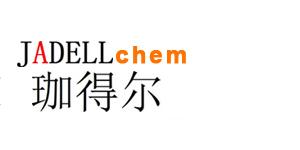Recombinant Mouse Agr3, His (HEK293-expressed) 是在 C 末端带有 His 标签的小鼠重组 Agr3,由哺乳动物表达系统产生,并表达编码 Ile21-Leu165 的靶基因。
Synonyms
rMuAgr3, His; Agr3 ; 重组小鼠 Agr3,His (HEK293 细胞表达)
Species
MouseSource
HEK 293 Accession
Q8R3W7 Gene ID
403205 Molecular Weight
Approximately 16.0 kDa AA Sequence
IAIKKEKRPP QTLSRGWGDD ITWVQTYEEG LFHARKSNKP LMVIHHLEDC QYCQALKKEF AKNEEIQEMA QNDFIMLNLM HETTDKNLSP DGQYVPRIMF VDPSLTVRAD ITGRYSNRLY TYEPQDLPML VDNMKKALRL IQSELHHHHH H Biological Activity
Data is not available. Appearance
Solution Formulation
Supplied as a 0.2 μm filter solution of 20 mM Tris, 100 mM NaCl, 10% Glycerol, pH 8.0. Endotoxin Level
<1 EU/μg, determined by LAL method. Reconstitution
N/A Storage & Stability
Recombinant Mouse Agr3, His (HEK293-expressed) (rMuAgr3, His) is stored at -20°C. It is stable at 4°C for 1 week or -20°C for longer. It is recommended to freeze aliquots at -20°C or -80°C for extended storage. Shipping
Shipping with dry ice. Background
Anterior gradient protein 3 (AGR3) is a homologue of the pro-oncogenic AGR2. AGR3 and AGR2 share a 71% sequence identity and lie adjacent to one another at chromosomal position 7p2. Functionally, they belong to the protein disulfide isomerases (PDIs) family, which act as endoplasmic reticulum (ER)-resident molecular foldases involved in the maintenance of cellular homeostasis. AGR3 is an ER resident protein, which is required for the regulation of ciliary beat frequency and mucociliary clearance in the airway epithelium. AGR3 was shown to interact with dystroglycan-1 (DAG-1) and metastasis-associated C4.4A protein, indicating its potential as a driver of metastasis. AGR3 is a potential promising target for anti-tumor therapy. Elevated AGR3 expression levels were reported in some cancer types, including breast, liver, prostate and ovary[1]. |



